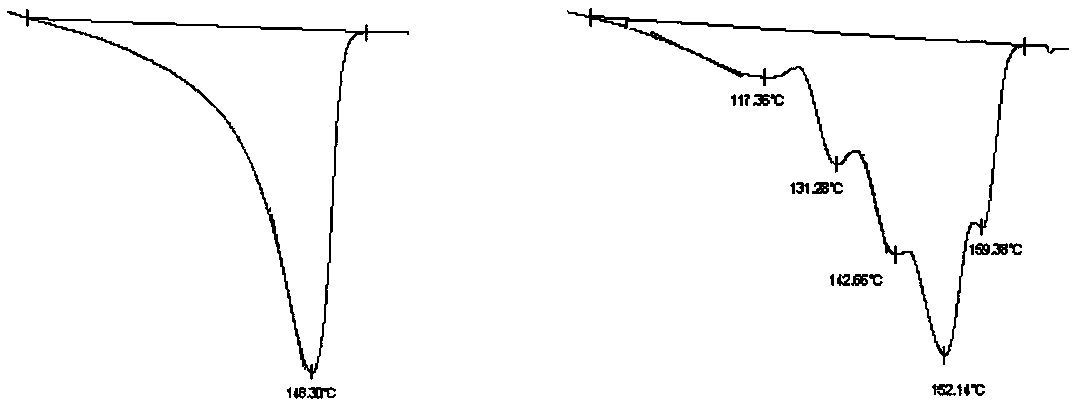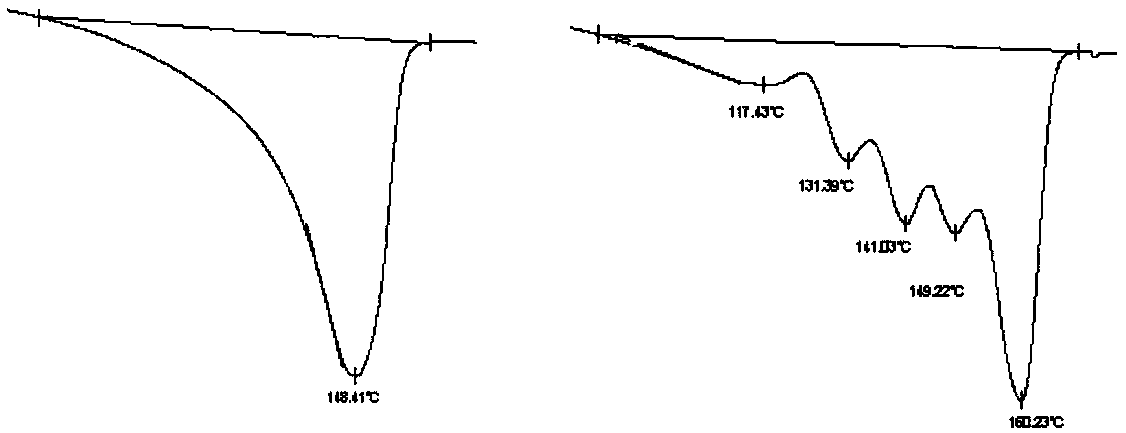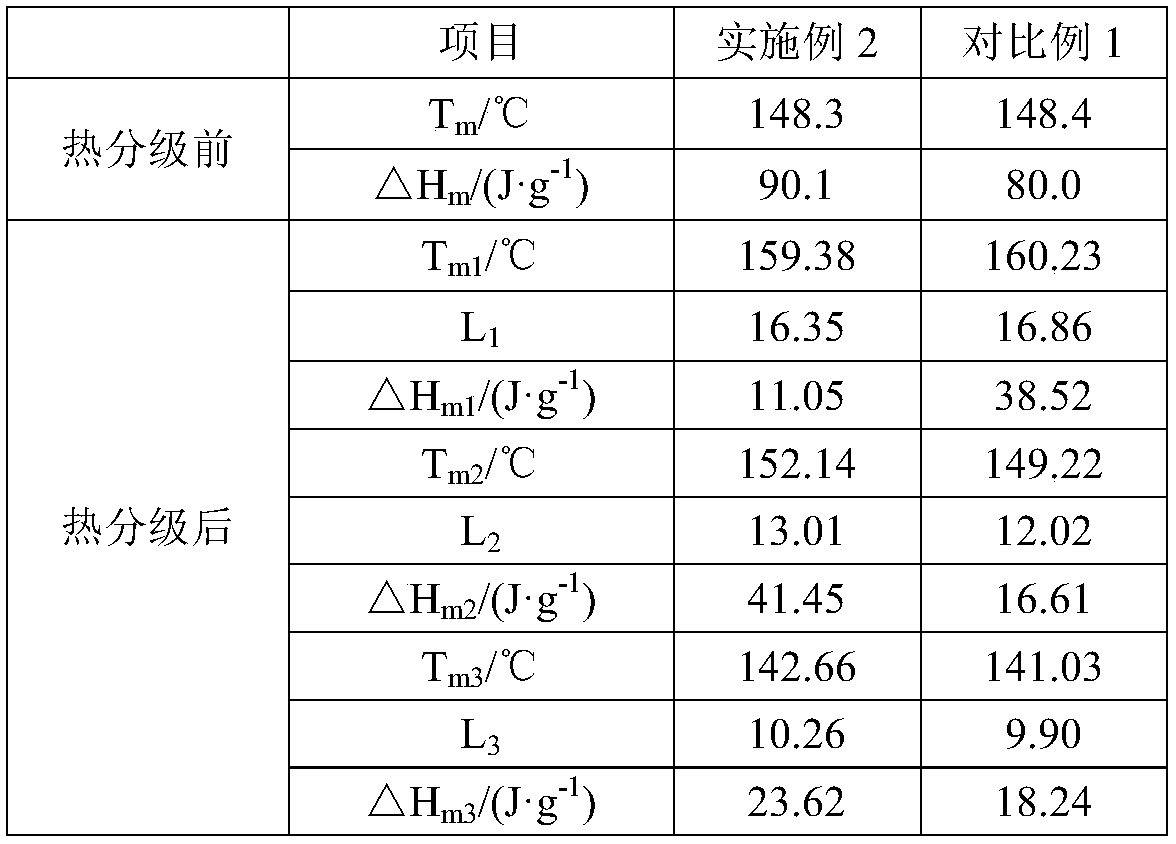Low-precipitation polypropylene resin for injection, stretching and bottle blowing
A polypropylene resin, injection stretch blowing technology, applied in the field of polypropylene resin, low precipitation injection stretch blowing polypropylene resin, can solve the problems of increased risk of food hygiene safety, sensitivity to precipitates, etc., to meet the requirements of food hygiene and safety Requirements, the effect of less n-hexane extract
- Summary
- Abstract
- Description
- Claims
- Application Information
AI Technical Summary
Problems solved by technology
Method used
Image
Examples
Embodiment 1~3
[0020] The characteristics of the propylene / 1-butene random copolymerized polypropylene resin used in the examples are shown in Table 1, and the melt flow rate is 8-12 g / 10 min.
[0021] Embodiment Antioxidant adopts 1,3,5-trimethyl-2,4,6-three (3,5-di-tert-butyl-4 hydroxybenzyl) benzene and three (2,4-di-tert-butyl A mixture of phenyl)phosphites, the ratio of the two is 1:2; the nucleating agent is 2,2'-methylene-bis(4,6-di-tert-butylphenyl)sodium phosphate; acid neutralization The agent is calcium stearate. The ratio of polypropylene resin base material to antioxidant, nucleating agent and acid neutralizer is 100:0.12:0.05:0.05.
[0022] In the examples, the propylene / 1-butene random copolymerized polypropylene resin base material is mixed with additives such as antioxidants, nucleating agents, and acid neutralizers, and granulated by melt extrusion to prepare propylene / 1- Butene random copolymerization polypropylene resin.
Embodiment 4
[0025] The melt flow rate of the propylene / 1-butene random copolymerized polypropylene resin used is 3.0g / 10min, and the antioxidant is 1,3,5-trimethyl-2,4,6-tri(3,5-di A mixture of tert-butyl-4-hydroxybenzyl)benzene and tris(2,4-di-tert-butylphenyl)phosphite, the ratio of the two is 1:0.3; the nucleating agent is 2,2'-methylene Base-sodium bis(4,6-di-tert-butylphenyl)phosphate; acid neutralizer is calcium stearate. The ratio of polypropylene resin base material to antioxidant, nucleating agent and acid neutralizer is 100:0.03:0.02:0.02. The steps for preparing the propylene / 1-butene random copolymerized polypropylene resin are the same as in Example 1. The n-hexane extract of the resulting resin was 1.03%.
Embodiment 5
[0027] The melt flow rate of the propylene / 1-butene random copolymerized polypropylene resin used is 20.0g / 10min, and the antioxidant is 1,1,3-tris(2-methyl-4-hydroxy-5-tert-butylbenzene base) butane and tris(2,4-di-tert-butylphenyl)phosphite, the ratio of the two is 1:6; the nucleating agent is 2,2′-methylene-bis(4, 6-di-tert-butylphenyl) sodium phosphate; acid neutralizer is hydrogenated talc. The ratio of polypropylene resin base material to antioxidant, nucleating agent and acid neutralizer is 100:0.25:0.15:0.10. The steps for preparing the propylene / 1-butene random copolymerized polypropylene resin are the same as in Example 1. The n-hexane extract of the resulting resin was 1.09%.
PUM
| Property | Measurement | Unit |
|---|---|---|
| melting point | aaaaa | aaaaa |
| melt flow index | aaaaa | aaaaa |
| melt flow index | aaaaa | aaaaa |
Abstract
Description
Claims
Application Information
 Login to View More
Login to View More - R&D
- Intellectual Property
- Life Sciences
- Materials
- Tech Scout
- Unparalleled Data Quality
- Higher Quality Content
- 60% Fewer Hallucinations
Browse by: Latest US Patents, China's latest patents, Technical Efficacy Thesaurus, Application Domain, Technology Topic, Popular Technical Reports.
© 2025 PatSnap. All rights reserved.Legal|Privacy policy|Modern Slavery Act Transparency Statement|Sitemap|About US| Contact US: help@patsnap.com



